Rosemarie Trockel Untitled 1987 knitted wool 100 x 80 cm. (39 3/8 x 31 1/2 in.) Signed and dated ‘RT 87’ on the reverse stretcher.
Provenance Barbara Gladstone Gallery, New York Private Collection Christie’s, New York, Contemporary Art, 17 May 2000, Lot 215 Sotheby’s, London, Contemporary Art Evening Auction, 12 October 2012 Lot 001 Catalogue Essay “In the ‘70s there were a lot of questionable women’s exhibitions, mostly on the theme of house and home. I tried to take wool, which was viewed as a woman’s material, out of this context and to rework it in a neutral process of production.” ROSEMARIE TROCKEL AND ISABELLA GRAW, MUTUAL ART, 2003 Rosemarie Trockel’s Untitled is a stunning example of the artist’s ‘wool paintings.’ At once dazzling and confounding, Untitled from 1987 invites further scrutiny, daring the viewer to unravel its enigmatic meaning. At a distance the massive expanse of dark colour seems solid and immobile but upon closer inspection, the individual threads of the wool expose themselves and the work assumes an entirely new and diferent identity. Trockel, in a very similar way to, but with a radically different effect as, Ad Reinhardt’s Black Paintings, has 'painted' a duotone work with a multiplicity of layers and meaning that gradually reveals itself upon closer inspection. Born and raised in West Germany, Rosemarie Trockel emerged in the early 1980s as a principal figure in the German art scene, a member of the generation that followed in the hallowed footsteps of Gerhard Richter Sigmar Polke and Georg Baselitz Having studied in Cologne at the Werkkunstschule, which was then heavily infuenced by the artist/teacher/shaman Joseph Beuys Trockel radically departed from the masculine painting tradition that preceded her. Her artistic output, heavily infuenced by a feminist sensibility and characterized by her reputation as an enfant terrible, played a decisive role in the rapidly evolving German contemporary art scene at the time. There is a gravitational pull within her work that is informed by the avant-garde that sustained her generation. Responding to both Pop art’s embracing of the commodity and also to artists like Joseph Beuys’ socializing of art into a project for the reform and improvement of society, Trockel sought in these works, as in much of her own art, to shed light on the ofen hidden role of women as workers. Using a format of simple repetition, derived from both the Minimalist and Pop art aesthetic, she repeats not so much a single motif as a single chromatic instant endlessly across the vast empty expanse of the knitted feld. The greatest triumph of Trockel’s art is that from a polymath of infuences, her artistic production appears entirely autonomous as she fearlessly confronted and incorporated feminist concerns and sexuality. Trockel’s wool paintings were originally conceived as a riposte to an art critic’s comment that situated women’s artistic practices outside the established fne art canon and within the domestic realm of arts and crafs. Trockel created Untitled through a mechanized process, in contrast to the deliberate homemade style of the ‘pattern’, which was derived from women’s magazines and knitting books. The work’s mass-reproduced aesthetic recalls minimalism’s mode of industrial production, whilst Pop art’s seriality, festishization of the banal, and elevation of low consumer culture are evinced through the use of the humble woolen thread. Simultaneously challenging clichés and prejudices about women’s art, Trockel subverts conventions of the male dominated tradition of auratic oil on canvas painting. There is no mystery concerning the production of the work as one might ponder layers of paint in one of Reinhardt’s paintings. The immediacy of its physicality envelops the viewer. However, the menacing nature of the dark coloring seems to intone an almost smothering quality as opposed to the usual comfort of a blanket. The viewer is presented with a physical manifestation of the import of domestic production and its impact on his or her daily life. Rosemarie Trockel’s Untitled is a work with a multiplicity
Rosemarie Trockel Untitled 1987 knitted wool 100 x 80 cm. (39 3/8 x 31 1/2 in.) Signed and dated ‘RT 87’ on the reverse stretcher.
Provenance Barbara Gladstone Gallery, New York Private Collection Christie’s, New York, Contemporary Art, 17 May 2000, Lot 215 Sotheby’s, London, Contemporary Art Evening Auction, 12 October 2012 Lot 001 Catalogue Essay “In the ‘70s there were a lot of questionable women’s exhibitions, mostly on the theme of house and home. I tried to take wool, which was viewed as a woman’s material, out of this context and to rework it in a neutral process of production.” ROSEMARIE TROCKEL AND ISABELLA GRAW, MUTUAL ART, 2003 Rosemarie Trockel’s Untitled is a stunning example of the artist’s ‘wool paintings.’ At once dazzling and confounding, Untitled from 1987 invites further scrutiny, daring the viewer to unravel its enigmatic meaning. At a distance the massive expanse of dark colour seems solid and immobile but upon closer inspection, the individual threads of the wool expose themselves and the work assumes an entirely new and diferent identity. Trockel, in a very similar way to, but with a radically different effect as, Ad Reinhardt’s Black Paintings, has 'painted' a duotone work with a multiplicity of layers and meaning that gradually reveals itself upon closer inspection. Born and raised in West Germany, Rosemarie Trockel emerged in the early 1980s as a principal figure in the German art scene, a member of the generation that followed in the hallowed footsteps of Gerhard Richter Sigmar Polke and Georg Baselitz Having studied in Cologne at the Werkkunstschule, which was then heavily infuenced by the artist/teacher/shaman Joseph Beuys Trockel radically departed from the masculine painting tradition that preceded her. Her artistic output, heavily infuenced by a feminist sensibility and characterized by her reputation as an enfant terrible, played a decisive role in the rapidly evolving German contemporary art scene at the time. There is a gravitational pull within her work that is informed by the avant-garde that sustained her generation. Responding to both Pop art’s embracing of the commodity and also to artists like Joseph Beuys’ socializing of art into a project for the reform and improvement of society, Trockel sought in these works, as in much of her own art, to shed light on the ofen hidden role of women as workers. Using a format of simple repetition, derived from both the Minimalist and Pop art aesthetic, she repeats not so much a single motif as a single chromatic instant endlessly across the vast empty expanse of the knitted feld. The greatest triumph of Trockel’s art is that from a polymath of infuences, her artistic production appears entirely autonomous as she fearlessly confronted and incorporated feminist concerns and sexuality. Trockel’s wool paintings were originally conceived as a riposte to an art critic’s comment that situated women’s artistic practices outside the established fne art canon and within the domestic realm of arts and crafs. Trockel created Untitled through a mechanized process, in contrast to the deliberate homemade style of the ‘pattern’, which was derived from women’s magazines and knitting books. The work’s mass-reproduced aesthetic recalls minimalism’s mode of industrial production, whilst Pop art’s seriality, festishization of the banal, and elevation of low consumer culture are evinced through the use of the humble woolen thread. Simultaneously challenging clichés and prejudices about women’s art, Trockel subverts conventions of the male dominated tradition of auratic oil on canvas painting. There is no mystery concerning the production of the work as one might ponder layers of paint in one of Reinhardt’s paintings. The immediacy of its physicality envelops the viewer. However, the menacing nature of the dark coloring seems to intone an almost smothering quality as opposed to the usual comfort of a blanket. The viewer is presented with a physical manifestation of the import of domestic production and its impact on his or her daily life. Rosemarie Trockel’s Untitled is a work with a multiplicity

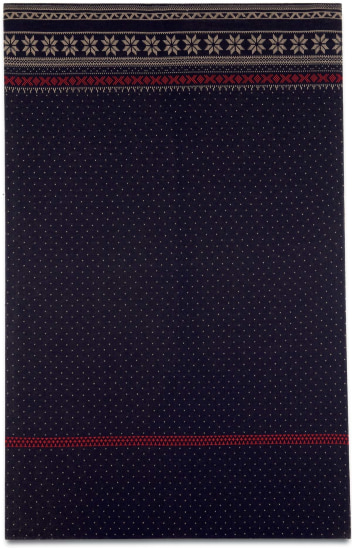

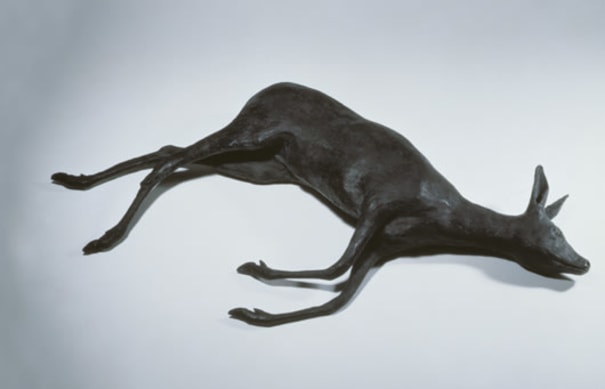
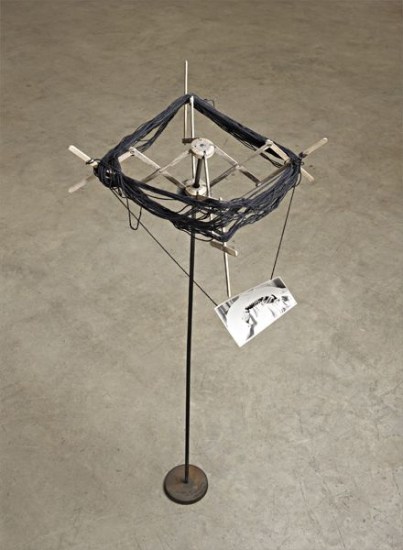
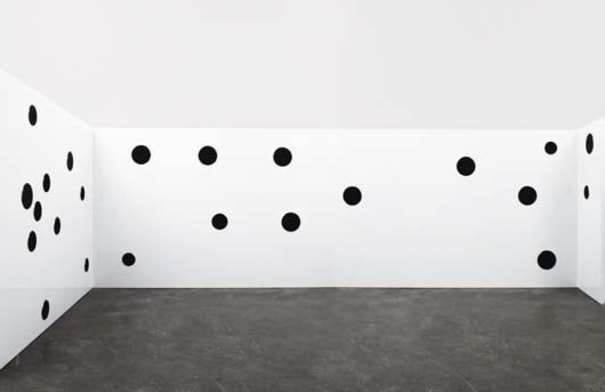
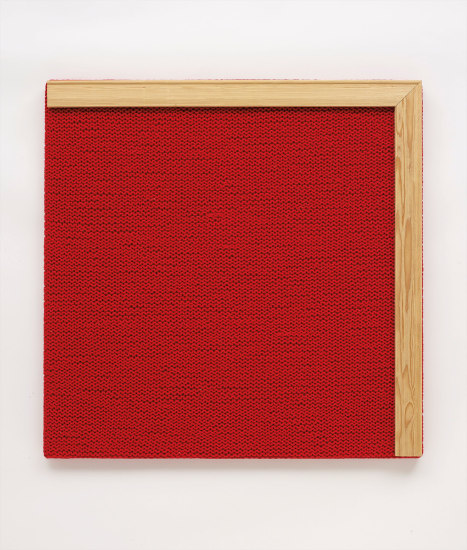
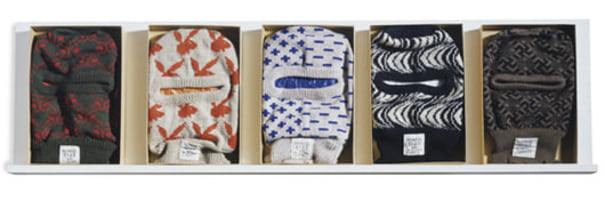




Testen Sie LotSearch und seine Premium-Features 7 Tage - ohne Kosten!
Lassen Sie sich automatisch über neue Objekte in kommenden Auktionen benachrichtigen.
Suchauftrag anlegen